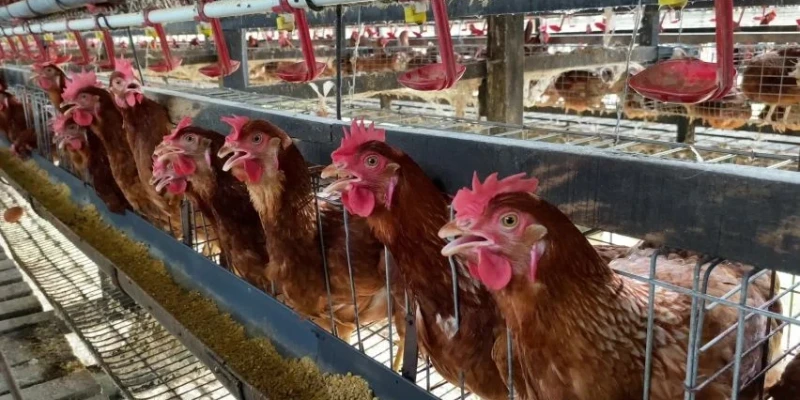
What is the cost of raising 5,000 laying hens in Botswana
Raising hens for egg production is a lucrative business venture in many countries, including Botswana. The demand for eggs is consistently high
Raising hens for egg production is a lucrative business venture in many countries, including Botswana. The demand for eggs is consistently high, making it an attractive option for farmers and entrepreneurs alike. However, understanding the cost of raising 5,000 laying hens in Botswana is essential for anyone considering this investment. In this article, we will explore various factors affecting the cost of raising these birds, the expected returns on investment, and best management practices to ensure profitability.
Initial Setup Costs of raising 5,000 laying hens in Botswana
The first step in evaluating the cost of raising 5,000 laying hens in Botswana involves understanding the initial setup expenses. These costs typically include:
- Housing Construction: Building a suitable poultry house to accommodate 5,000 laying hens is a significant part of the initial investment. The structure must provide adequate ventilation, lighting, and protection from predators and weather elements. Basic construction materials, labor, and design considerations can lead to expenses ranging from BWP 100,000 to BWP 200,000, depending on location and quality.
- Equipment Purchases: Essential equipment includes feeders, waterers, Egg collection system, nesting boxes, and heating systems. Investing in good-quality equipment can ensure a smooth operation and may range between BWP 50,000 to BWP 100,000.
- Biosecurity Measures: Implementing strict biosecurity protocols is crucial for preventing disease outbreaks. This could involve fencing, sanitation measures, and vaccination programs, costing around BWP 10,000 to BWP 20,000.
- Initial Stock Purchase: Purchasing 5,000 day-old chicks or pullets represents another major expense. Prices can vary based on the breed and source but generally fall between BWP 120,000 to BWP 150,000 for high-quality laying hens.
Overall, initial setup costs for raising 5,000 laying hens in Botswana can range from BWP 250,000 to BWP 400,000, depending on specific choices and regional prices.nge from BWP 250,000 to BWP 400,000, depending on specific choices and regional prices.

Ongoing Operational Costs of raising 5,000 laying hens in Botswana
Once the farm is established, ongoing operational costs must be accounted for. These expenses will be incurred throughout the hens’ productive life, which typically lasts about 72 weeks. Key components include:
- Feed Costs: Feed is often the largest recurring expense in poultry farming. For 5,000 laying hens, the feed requirement is substantial. On average, each hen consumes approximately 110 grams of feed daily, equating to around 550 kg of feed per day. At an average feed cost of BWP 5 per kg, monthly feed expenses could exceed BWP 83,000.
- Water Supply: Access to clean water is critical for the health and productivity of laying hens. While the cost of water may vary, budgeting around BWP 2,000 to BWP 3,000 monthly would be prudent for a large-scale operation.
- Veterinary Care: Routine veterinary care is essential for maintaining flock health. Expenses for vaccinations, medications, and health checks can add up to approximately BWP 5,000 to BWP 10,000 per month.
- Labor Costs: Employing skilled labor to manage daily operations, feeding, cleaning, and monitoring the health of the hens is crucial. Labor costs can vary widely, but budgeting around BWP 20,000 monthly for staff salaries is reasonable.
In total, ongoing operational costs for raising 5,000 laying hens in Botswana can reach upwards of BWP 120,000 to BWP 150,000 per month, depending on efficiency and management practices.
Revenue Generation and Profitability
Understanding how to generate revenue from raising 5,000 laying hens in Botswana is vital for evaluating the feasibility of this venture. With an average laying rate of 80-90%, one can expect approximately 4,000 to 4,500 eggs produced daily. Given the current market price of around BWP 1.50 to BWP 2.00 per egg, potential daily revenue could range from BWP 6,000 to BWP 9,000.
Example Calculation:
- Daily Revenue: Average of 4,250 eggs x BWP 1.75 (average price) = BWP 7,437.50
- Monthly Revenue: BWP 7,437.50 x 30 days = BWP 223,125
By comparing the expected monthly revenue against the ongoing operational costs of BWP 120,000 to BWP 150,000, one can see that there is considerable potential for profit if managed correctly.
Break-even Point:
To determine the break-even point when raising 5,000 laying hens in Botswana, consider both fixed and variable costs. The initial investment could be recouped within the first year of operation if revenue projections are met. Effective marketing strategies and identifying reliable distribution channels will further
